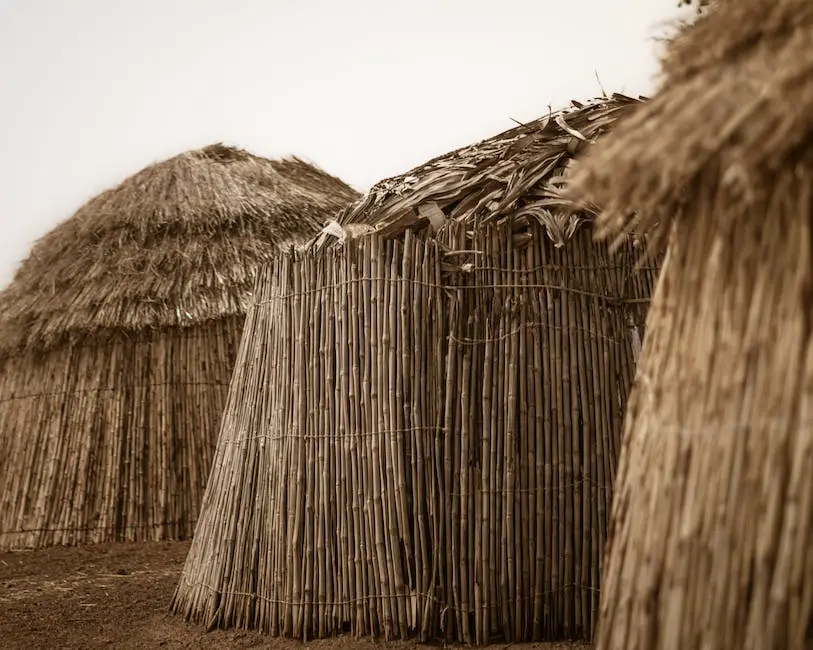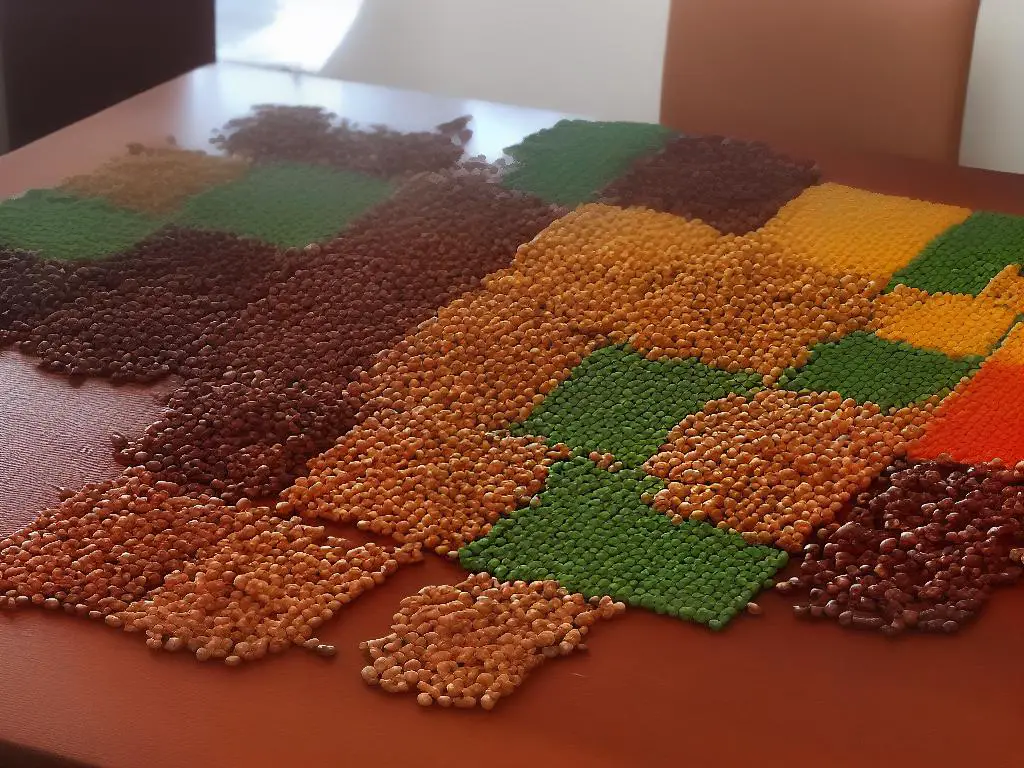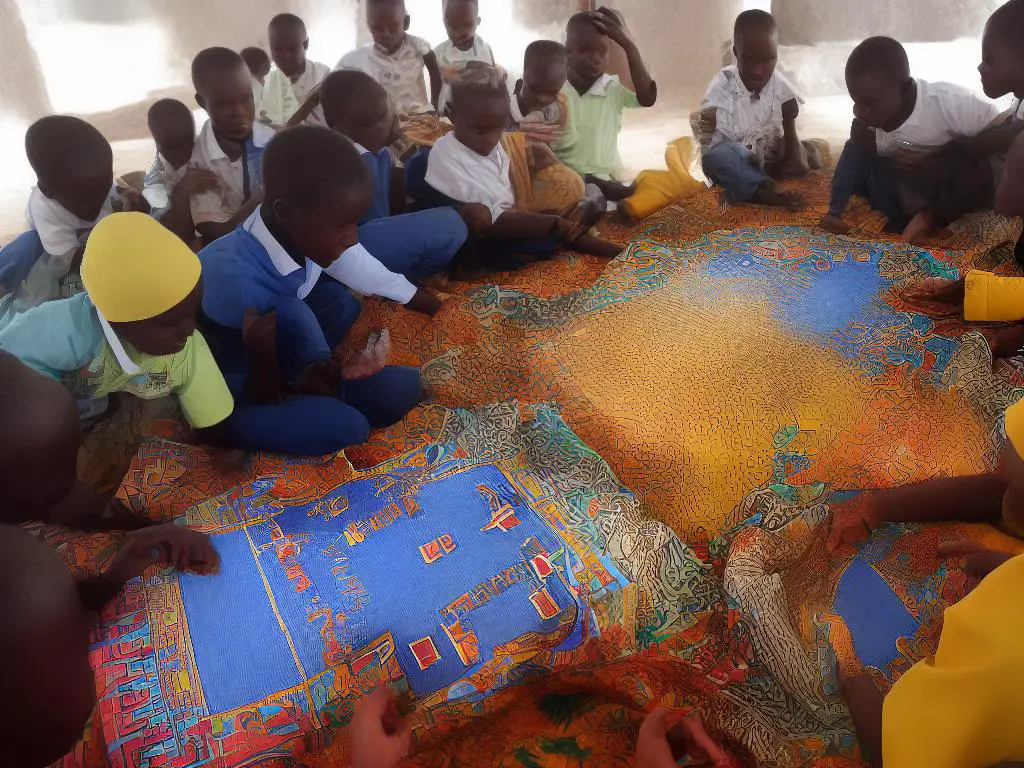Africa’s rich cultural heritage is reflected in many facets, one of which is traditional board games, played and enjoyed across the continent for centuries. With diverse and unique gameplay mechanics, these board games carry with them a world of history, thriving social interactions, and captivating stories that allow players to immerse themselves into a fascinating cultural experience. This exploration of traditional African board games delves into their origins, provides insights on popular games and their rules, and evaluates their cultural significance and modern adaptations.
History of African board games and their cultural significance
Traditional African board games have a rich history that dates back thousands of years, long before the colonial period and the influx of Western cultures. Archeological findings and historical records have shown that such games were played extensively among various communities across the African continent. These games played an important role in the development of ancient African cultures, and were crucial for promoting social interactions, communication, critical thinking, and strategic decision-making skills among their players.
Popular African board games and their rules explained
- Mancala
- Bao
- Yote
- Senet
- Morabaraba
One of the oldest and most widely known African board games is Mancala, also referred to as Oware, Ayoayo, Kalah, Bao, or Omweso, among other names, depending on the region where it is played. Mancala’s origins can be traced back to at least 7,000 years ago and its earliest evidence was discovered in present-day Ethiopia. This game involves a board with rows of pits and pebbles or seeds as game pieces, and it is played by distributing the seeds across the pits according to specific rules. Mancala has various versions, each with its own rules and strategies, and is still played today in various countries across the continent and around the world.Another traditional African board game with great historical significance is Senet, an ancient Egyptian game that dates back to around 3,500 BCE. Senet was considered as a game for the afterlife and was often included in the tombs of Egyptian pharaohs. The gameplay involves maneuvering a set of pawns on a grid, with the objective being to move one’s pawns off the board before the opponent. It is believed that Senet evolved over time into other board games, such as the Game of Ur, which was popular in ancient Mesopotamia and also reached African territories.Yote, a lesser-known but nevertheless significant African board game, is thought to have originated in West Africa. Yote is considered a cousin of Draughts (or checkers), as it involves moving pieces across an 8×8 grid and capturing the opponent’s pieces by jumping over them. Furthermore, the popular modern game of chess has been suggested to have been influenced by African board games, particularly by those that have elements of capturing and eliminating opponent’s pieces, such as Zamma, a game from North Africa.The traditional African board games have not only had a profound influence on Africa’s historical and cultural development, but have also played a significant role in shaping the world of modern gaming. These timeless games have survived generations, often maintaining their original form, or evolving into new games that continue to be enjoyed today. Their ongoing presence and impact on global gaming culture stand as a testament to their inherent value, as well as the rich and diverse history of the African continent.

Popular African Board Games
One of the most well-known traditional African board games is Mancala, which boasts a long history that dates back thousands of years. The Mancala family of games features a board with rows of holes, using seeds or stones as game pieces. In each turn, players will collect pieces from one hole, distributing them one by one into the other holes, often in a clockwise direction, all while aiming to claim the most number of seeds. Different regional variations of Mancala exist, with Oware and Kalah being popular examples. Despite the seemingly simple gameplay, Mancala games require strategic thinking and planning, contributing to their lasting appeal.
Bao, another widely played game on the African continent, is a member of the Mancala family specific to East Africa, particularly popular in Tanzania and Kenya. Bao boards typically consist of 32 holes, arranged in four rows. Like other Mancala games, the objective is to capture the opponent’s seeds by strategically distributing your own. However, Bao is significantly more complex with unique rules governing seeds movement and advanced gameplay mechanics that require players to make decisions several moves ahead.
Yote, a popular West African board game, somewhat resembles the western game of draughts or checkers. Played on a 5×6 board, the goal is to capture all of your opponent’s pieces or render them unable to move. Each player begins with twelve pieces placed on the board’s dark squares. Pieces move across the board in an orthogonal direction and perform capturing by jumping either forwards or backwards over an opponent’s piece. Jumping multiple opponents’ pieces on a single turn is allowed, and captured pieces are removed from the board. The strategic element of Yote lies in how players choose to move and capture, as well as their ability to anticipate the opponent’s actions.
One of the oldest known board games, Senet, originated in ancient Egypt over 5,000 years ago. Its popularity spread across the African continent, leaving a lasting influence on subsequent African games. Senet is a two-player strategy game that utilizes a 3×10 grid board with 30 squares. Typically, players start with five pieces each, placed on alternating squares on the first row. The objective is to move all pieces to the opposite end of the board through a process of jumping and capturing. Although the original rules of Senet have been lost to history, researchers and enthusiasts have pieced together gameplay based on historical artifacts and tomb inscriptions, allowing modern players to enjoy this millennia-old game.
Morabaraba is a traditional two-player strategy board game originating from Southern Africa. Played on a board with 24 intersections connected by lines, the primary objective is for players to form vertical or horizontal lines of three pieces, known as mills. By creating a mill, a player can remove an opponent’s piece from the board. The game has two phases: the placement phase, in which players take turns positioning their pieces on the board, and the movement phase, which begins when all pieces have been placed. The winner is determined by either reducing the opponent’s pieces to two or by blocking them from making any legal moves. Morabaraba holds particular significance in South African communities, as it is seen as an essential part of local culture and is even played competitively.

Rules and Gameplay
Mancala, another traditional African board game, dates back over a thousand years. The game features a wooden board with twelve holes arranged in two rows of six. Players strategically place stones or seeds in these holes and take turns picking them up and distributing them in a clockwise direction. The objective of Mancala is to capture the opponent’s seeds and accumulate the most by the end of the game.
Morabaraba is another traditional African board game that is predominantly played in southern Africa. In this game, players use 12 tokens called cows that are placed at the intersections of lines on a three-concentric-square grid board. The objective is to form a ‘mill’ by aligning three cows vertically or horizontally to capture the opponent’s cows. Players must be strategic in their placement and movement of the cows to win the game.Seega is a traditional African game that is widely enjoyed in northern Africa. It is played on a grid board that can range in size from 5×5 to 10×10. Players start with 12 or more tokens and take turns placing them on the board and moving them to adjacent squares. The goal is to surround the opponent’s tokens and capture them. The game continues until one player captures all of their opponent’s tokens or reduces their pieces to three or fewer.
Dara, a traditional African board game, is primarily played in Nigeria and is known for its strategic gameplay. The game takes place on a 5×6 grid board, featuring 12 tokens called ‘dara stones’. These stones are placed on the intersecting points of the three central rows. The main objective is for a player to create a three-in-a-row formation vertically or horizontally while simultaneously preventing their opponent from accomplishing the same goal. Players take turns moving their tokens to adjacent vacant intersections, and a winner is declared once an opponent is either limited to only two tokens or unable to make any legal moves.

Cultural Significance
Traditional African board games, such as Dara, hold a significant impact on social interactions within communities. These games are often played during social gatherings and leisure time, acting as a catalyst for connection among players. They encourage camaraderie and bridge gaps between individuals. Besides providing entertainment and friendly competition, these games create a platform for exchanging ideas, stories, and values. As some games require collaboration and strategic thinking, players learn to work together, ultimately developing strong social skills and contributing to community bonding.
Additionally, board games hold educational significance for communities, as they are valuable tools for teaching various subjects and life skills. They combine entertainment with learning, making it easier for children and adults alike to acquire and apply knowledge. For example, Mancala, a popular African board game, is known to improve strategic thinking, math skills, and observation. Similarly, the game of Yote, which is played across Western Africa, promotes critical thinking and problem-solving abilities. By integrating these board games into the educational system, it has been possible to impart essential knowledge while keeping the learning process interactive and engaging for students.
Traditional African board games also play a significant role in preserving and promoting cultural heritage. They often embed and communicate cultural values, beliefs, and history through their unique designs, materials, and rules. For instance, the Zamma game from Northern Africa has its roots in ancient Egyptian civilization, and the Swahili game of Bao is deeply connected to the cultural practices of East Africa. By passing down these games from generation to generation, communities are able to maintain their cultural identity, and keep their traditions alive amidst a rapidly changing world.
Another important aspect of these games is their function in storytelling and oral tradition. Board games become a focal point in social gatherings where stories are shared and passed down through generations. These stories often carry a moral or educational message, which is conveyed through the gameplay and interactions between players. In some cases, board games have even been created to represent specific historical events, legendary figures, or cultural symbols, further highlighting their role in preserving and disseminating cultural heritage.
Traditional African board games have long served as catalysts for change within communities, inspiring discussions and raising awareness about social issues. For example, the game of Monza, which is played in many African countries, encourages players to make decisions based on ethics and morality. This promotes conversations about the consequences of one’s actions and transforms board games into more than just a source of entertainment. Instead, they become a vehicle for addressing societal issues and fostering change, helping to shape not only individual players but also the community as a whole.

Modern Adaptations
Due to the digital revolution, traditional African board games have seen a resurgence and gained international recognition. Games such as Mancala and Oware have been adapted into digital platforms, available as mobile applications, browser games, and on gaming consoles. This has enabled players from around the world to engage in competitive or casual matches, broadening the reach of these games and preserving their cultural significance for future generations. The smooth transition from physical to digital format ensures that these cherished games continue to facilitate important conversations and positively impact communities, both in Africa and globally.
In addition to digital adaptations, there has been a surge in the development of contemporary board game versions of traditional African games. Modern game designers have sought inspiration from diverse African cultures, creating games that incorporate unique and intricate design elements, showcasing the rich variety of African art and symbolism. These games blend traditional gameplay with contemporary mechanics to appeal to a wide range of players. Some examples include Yokaï No Morï, which takes inspiration from Mancala, and Uhuru, which is based on the Luo game of Bao.
Another significant development has been the organization of international competitions, aimed at promoting traditional African board games on the global stage. Various tournaments have taken place across Africa and Europe, attracting players from different cultural backgrounds and skill levels. For instance, the annual Oware Championship, organized by the African Organization for Intellectual Culture, has been held in Europe and Africa since 1998. These championships foster cultural exchange and appreciation for traditional African board games and often include other cultural activities such as dance and music to create a vibrant atmosphere.
Furthermore, educational institutions and cultural centers have also become increasingly interested in traditional African board games as a means of promoting African heritage and inspiring creativity, critical thinking, and problem-solving skills in younger generations. Museums, libraries, and schools now incorporate these games into their activities and curriculums, offering workshops and exhibitions to educate learners and motivate interest in the history, culture, and traditions surrounding these games.
Collaboration between researchers, game developers, and African cultural proponents has become crucial to this resurgence of traditional African board games. By working together, these stakeholders can ensure that the games are accurately represented and preserved for future generations. This combined effort also helps to create new markets for the games, generating income for the artisans who craft the physical game boards and pieces. The recent surge of interest in traditional African board games signifies their importance not only as a means of entertainment but also as valuable cultural artifacts to be cherished and preserved.

From their historical roots to their influence in the modern world, traditional African board games continue to captivate new generations and bring communities together. The games not only provide a means of healthy competition, education, and social interaction, but also preserve the rich cultural heritage of Africa, fostering a deep appreciation for the continent’s diverse history and traditions. With modern adaptations finding their way into digital platforms and international competitions, these ancient games are destined to continue their fascinating journey through time, bridging the past with the present, and inspiring new generations to appreciate the depth and beauty of Africa’s traditional gaming culture.